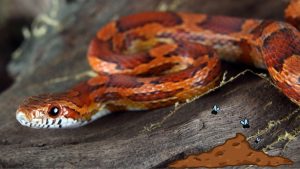Pet mice are adorable, social, and easy to take care of, making them a great addition to any household. However, owning a pet mouse requires a certain level of responsibility and knowledge to ensure their health and happiness. In this article, we will provide you with the necessary information to care for your pet mouse, including their housing, diet, exercise, handling and behavior, health, environment, and supplies.
When it comes to housing, it’s important to provide your pet mouse with a safe and comfortable living space. This includes a cage that is large enough for them to move around in, with plenty of bedding and hiding spots. Diet is also a crucial aspect of caring for your pet mouse. They require a balanced diet that includes a variety of fresh fruits and vegetables, as well as a high-quality, protein-rich mouse food.
Exercise and toys are essential for keeping your pet mouse healthy and happy. They are active creatures that require plenty of opportunities to run, climb, and play. Handling and behavior are also important to consider, as pet mice are social animals that crave interaction and attention. Regular handling and socialization can help prevent behavioral problems and ensure a strong bond between you and your pet mouse.
Key Takeaways
- Providing your pet mouse with a safe and comfortable living space is crucial for their well-being.
- A balanced diet that includes fresh fruits and vegetables, as well as high-quality mouse food, is essential for their health.
- Exercise, toys, handling, and socialization are all important aspects of caring for your pet mouse.
Housing
When it comes to housing your pet mouse, it’s important to provide them with a safe and comfortable environment. In this section, we’ll cover two important sub-sections: Enclosure and Bedding.
Enclosure
The enclosure you choose for your pet mouse should be large enough to provide them with plenty of space to move around and play. A wire cage is a popular choice for mouse owners, as it allows for good ventilation and easy cleaning. Make sure the spacing between the wires is small enough to prevent your mouse from escaping or getting their head stuck.
It’s also important to choose an enclosure with a secure mesh top to prevent your mouse from escaping. Make sure the enclosure is placed in a quiet area of your home, away from any loud noises or sudden movements that could startle your pet.
Bedding
When it comes to bedding, aspen shavings are a good choice for your pet mouse. Avoid using cedar shavings, as they can be harmful to your pet’s respiratory system. You can also use shredded paper or paper-based bedding, but make sure it’s free of any harmful chemicals or dyes.
Provide your mouse with plenty of bedding to burrow and nest in. A depth of at least 2-3 inches is recommended. Replace the bedding at least once a week, or more often if it becomes soiled.
In summary, providing your pet mouse with a comfortable and secure enclosure, along with plenty of safe and clean bedding, is key to keeping them healthy and happy.
Diet
When it comes to feeding our pet mice, it’s important to provide a balanced diet that meets their nutritional needs. We should aim to feed them a combination of seeds, grains, and fruits, while also making sure they have access to fresh water and occasional treats.
Seeds, Grains, and Fruits
Pet mice enjoy a variety of seeds and grains such as oats, barley, and sunflower seeds. We can also add some fresh fruits to their diet such as apples, bananas, and berries. It’s important to avoid feeding them citrus fruits as they can upset their stomach.
To ensure that our pet mice are getting the right nutrition, we can also provide them with specially formulated mouse food that is available at pet stores. These foods are often fortified with vitamins and minerals that mice need to stay healthy.
Water
Like all animals, mice need access to fresh water at all times. We should provide them with a water bottle or bowl that is changed daily to ensure that the water is clean and fresh.
Treats
While treats should be given sparingly, they can be a great way to bond with our pet mice and provide them with some variety in their diet. We can offer them small pieces of dog biscuits or even a small piece of cheese as a treat. However, it’s important to remember that treats should not make up a significant portion of their diet and should be given in moderation.
In summary, a balanced diet is essential for the health and well-being of our pet mice. By providing them with a variety of seeds, grains, and fruits, fresh water, and occasional treats, we can ensure that they are getting the nutrition they need to thrive.
Exercise and Toys
When it comes to keeping your pet mouse healthy and happy, exercise and toys are essential. Here are some tips on how to provide your pet mouse with the exercise and entertainment they need.
Exercise Wheel
An exercise wheel is a must-have for pet mice. It provides them with a way to burn off energy and stay active. When choosing an exercise wheel, make sure it is sturdy and made of metal. Mice have a tendency to chew on things, so a plastic wheel may not be the best choice. The wheel should also be the appropriate size for your mouse. A wheel that is too small can cause back problems, while a wheel that is too large can be difficult for your mouse to use.
It’s important to clean the exercise wheel regularly to prevent the buildup of bacteria and feces. You can use a mild soap and warm water to clean the wheel, making sure to rinse it thoroughly and dry it completely before putting it back in the cage.
Toys
In addition to an exercise wheel, your pet mouse will also need some toys to play with. Chew toys are a great option, as they help keep your mouse’s teeth healthy and provide them with something to gnaw on. You can find chew toys made specifically for mice at your local pet store, or you can make your own using items like cardboard tubes or blocks of wood.
Other types of toys that mice enjoy include tunnels, ladders, and hideouts. These provide your mouse with a way to explore and play, keeping them mentally stimulated and entertained. When choosing toys for your mouse, make sure they are safe and free of any small parts that could be swallowed.
Overall, providing your pet mouse with plenty of exercise and toys is key to keeping them healthy and happy. By following these tips, you can ensure that your mouse has everything they need to thrive.
Handling and Behavior
When it comes to handling pet mice, it’s important to approach them calmly and gently. Remember that mice are small and delicate animals, so it’s crucial to handle them with care. Here are some tips on how to handle your pet mouse:
Taming
Taming your pet mouse is an important part of caring for them. When you first bring your mouse home, give them a few days to settle into their new environment before attempting to handle them. During this time, you should spend time near their cage, talking to them and offering them treats. This will help them get used to your presence and associate you with positive experiences.
When you’re ready to handle your mouse, start by offering them a treat from your hand. Once they feel comfortable taking treats from you, you can try picking them up. To do this, gently scoop them up with both hands, making sure to support their entire body. Avoid picking them up by their tail, as this can be painful and cause injury.
Fighting
Mice are social animals and usually get along well with other mice. However, it’s important to monitor their behavior and watch for signs of aggression. If you have multiple mice, make sure they have plenty of space and resources to avoid fighting over food or toys.
If you notice your mice fighting, separate them immediately. Fighting can quickly escalate and cause serious injury or even death. You may need to keep them in separate cages or introduce them to each other slowly and under supervision.
In conclusion, handling and behavior are important aspects of caring for pet mice. Remember to approach your mouse calmly and gently, and always monitor their behavior to ensure they are getting along well with other mice. With proper care and attention, your pet mouse can be a happy and healthy companion for years to come.
Health
As responsible pet owners, we must ensure that our pet mice receive proper health care to live a healthy and happy life. In this section, we will discuss two important aspects of pet mouse health: vet care and tumors.
Vet Care
Regular visits to a veterinarian who specializes in small animals, such as mice, are essential for maintaining your pet’s health. During these visits, the vet will perform a physical exam and check for any signs of illness or disease. They may also recommend preventative measures, such as vaccinations and parasite control.
It is important to monitor your pet mouse’s weight, as obesity can lead to health problems. Additionally, keep an eye out for any changes in behavior, appetite, or appearance, as these can be signs of illness. If you notice anything out of the ordinary, schedule an appointment with your vet immediately.
Tumors
Unfortunately, tumors are a common health issue in pet mice. Female mice are more prone to developing mammary tumors, while male mice may develop tumors in their testicles. These tumors can be benign or malignant and can affect the mouse’s quality of life.
If you notice any lumps or bumps on your pet mouse, it is important to have them examined by a vet. Depending on the size and location of the tumor, your vet may recommend surgery to remove it. In some cases, tumors may not be operable, and the best course of action may be to manage the mouse’s symptoms and provide palliative care.
Regular vet visits and monitoring your pet mouse’s health can help catch tumors early and increase the chances of successful treatment. Remember, early detection is key in treating any health issue in your pet mouse.
Overall, proper health care is essential for the longevity and well-being of your pet mouse. By keeping up with regular vet visits and monitoring your pet’s health, you can help ensure a happy and healthy life for your furry friend.
Environment
When it comes to caring for a pet mouse, creating the right environment is crucial. Mice are nocturnal animals, which means they are most active at night. As such, we need to make sure their environment is conducive to their natural rhythms and preferences. In this section, we will cover two key aspects of a mouse’s environment: light and temperature, and noise.
Light and Temperature
Mice are sensitive to light, so we need to make sure their environment is not too bright during the day. We recommend keeping their cage in a room that is not too bright, or covering their cage with a towel or blanket during the day. This will help them feel more secure and comfortable.
In terms of temperature, mice are comfortable in a range of temperatures between 65-75°F. We recommend keeping their cage away from direct sunlight and drafts, as these can cause fluctuations in temperature that can be harmful to your mouse’s health.
Noise
Mice are also sensitive to noise, so we need to make sure their environment is as quiet as possible. Avoid placing their cage near loud appliances or in a room with a lot of foot traffic. If you have other pets or children in the house, make sure they are aware of your mouse’s presence and are gentle and quiet around them.
In conclusion, creating the right environment for your pet mouse is crucial to their health and happiness. By paying attention to light and temperature, and noise levels, we can ensure that our mice feel safe, comfortable, and secure in their homes.
Supplies
To properly care for a pet mouse, there are a few essential supplies that we need to have on hand. Here are the most important items:
Cage
The first thing we need is a suitable cage for our pet mouse. A cage with a solid base and wire sides is ideal. The cage should be at least 10 gallons in size, but bigger is always better. Mice are active creatures and love to explore, so the more space they have, the happier they’ll be.
Bedding
Next, we need to choose the right bedding for our mouse. Carefresh is a popular choice, as it’s soft and absorbent, helping to keep the cage clean and odor-free. Other options include shredded paper, aspen shavings, or wood pellets. Whatever bedding we choose, we need to make sure it’s safe for our mouse to use.
Food and Water
Mice require a specialized diet, so we need to make sure we have the right food on hand. A high-quality commercial mouse food is a good choice, as it contains all the nutrients our mouse needs. We can also supplement their diet with fresh fruits and vegetables. We also need to provide fresh water in a water bottle that attaches to the cage.
Toys and Enrichment
Mice are active creatures and need plenty of mental and physical stimulation to stay happy and healthy. Providing toys and enrichment items in their cage is essential. Things like exercise wheels, tunnels, and chew toys are great options. We can also provide nesting material like shredded paper or tissues to help our mouse feel comfortable and secure.
Cleaning Supplies
Finally, we need to make sure we have the right cleaning supplies on hand. We’ll need a small broom and dustpan to clean up any spilled bedding or food. We’ll also need a mild soap and water to clean the cage and accessories. It’s important to clean the cage at least once a week to keep our mouse healthy and happy.
By having these essential supplies on hand, we can provide our pet mouse with a safe, comfortable, and stimulating environment.
Conclusion
In conclusion, we believe that pet mice are good pets for those looking for a small, low-maintenance companion. Fancy mice are a popular choice due to their unique and varied colors and patterns. They are also relatively easy to care for and can be a great addition to any household.
When caring for pet mice, it is important to consider their social needs. Mice are social animals and should be housed with at least one other mouse. A pair of females is the easiest arrangement, though a small group of females is fine too if you provide the cage space. Male mice should not be housed together as they can become aggressive towards each other.
Obesity can be a concern with pet mice, so it is important to provide them with a balanced diet and plenty of opportunities for exercise. A diet consisting of high-quality commercial mouse food supplemented with fresh fruits and vegetables is recommended. It is also important to provide your mice with toys and other enrichment activities to keep them mentally stimulated.
As rodents, pet mice are prone to certain health issues such as respiratory infections and dental problems. Regular veterinary check-ups can help prevent and treat these issues. It is also important to keep their cage clean and provide them with fresh water and bedding regularly.
Overall, we believe that pet mice can make wonderful companions for those willing to provide them with the proper care and attention they need.
Frequently Asked Questions
How long do pet mice live?
Pet mice typically live for 1 to 3 years. This can vary based on factors such as genetics, diet, and living conditions. It’s important to provide your pet mouse with a healthy diet, clean living space, and regular veterinary check-ups to help ensure they live a long and healthy life.
Mice as pets pros and cons?
There are both pros and cons to owning a pet mouse. Some of the pros include their small size, low cost, and ease of care. They can also be social and affectionate with their owners. However, some of the cons include their short lifespan, the need for a clean living space, and the potential for health issues such as respiratory infections.
How much is a pet mouse at Petsmart?
The cost of a pet mouse at Petsmart can vary depending on the location and the specific breed of mouse. On average, pet mice can range from $5 to $15 at Petsmart.
Can you keep a wild mouse as a pet?
It is not recommended to keep a wild mouse as a pet. Wild mice can carry diseases and parasites that can be harmful to humans and other animals. It’s important to only adopt mice from reputable breeders or pet stores.
What do mice need in their cage?
Mice need a clean and spacious living space with plenty of room to move around and play. They also need access to fresh food and water, as well as toys and other enrichment items to keep them mentally stimulated.
Do pet mice bite?
Pet mice can sometimes bite, but this is usually only when they feel threatened or scared. It’s important to handle your pet mouse gently and with care to avoid any potential biting incidents. If you do get bitten, clean the wound thoroughly and seek medical attention if necessary.
Pet mice typically live for 1 to 3 years. This can vary based on factors such as genetics, diet, and living conditions. It’s important to provide your pet mouse with a healthy diet, clean living space, and regular veterinary check-ups to help ensure they live a long and healthy life.
“}},{“@type”:”Question”,”name”:”Mice as pets pros and cons?”,”acceptedAnswer”:{“@type”:”Answer”,”text”:”
There are both pros and cons to owning a pet mouse. Some of the pros include their small size, low cost, and ease of care. They can also be social and affectionate with their owners. However, some of the cons include their short lifespan, the need for a clean living space, and the potential for health issues such as respiratory infections.
“}},{“@type”:”Question”,”name”:”How much is a pet mouse at Petsmart?”,”acceptedAnswer”:{“@type”:”Answer”,”text”:”
The cost of a pet mouse at Petsmart can vary depending on the location and the specific breed of mouse. On average, pet mice can range from $5 to $15 at Petsmart.
“}},{“@type”:”Question”,”name”:”Can you keep a wild mouse as a pet?”,”acceptedAnswer”:{“@type”:”Answer”,”text”:”
It is not recommended to keep a wild mouse as a pet. Wild mice can carry diseases and parasites that can be harmful to humans and other animals. It’s important to only adopt mice from reputable breeders or pet stores.
“}},{“@type”:”Question”,”name”:”What do mice need in their cage?”,”acceptedAnswer”:{“@type”:”Answer”,”text”:”
Mice need a clean and spacious living space with plenty of room to move around and play. They also need access to fresh food and water, as well as toys and other enrichment items to keep them mentally stimulated.
“}},{“@type”:”Question”,”name”:”Do pet mice bite?”,”acceptedAnswer”:{“@type”:”Answer”,”text”:”
Pet mice can sometimes bite, but this is usually only when they feel threatened or scared. It’s important to handle your pet mouse gently and with care to avoid any potential biting incidents. If you do get bitten, clean the wound thoroughly and seek medical attention if necessary.
“}}]}
Author
-

Jess is a lifelong pet lover, known for her profound passion for animals. With a wide range of pets, from cats and dogs to fish and hamsters, she has experienced the joys and challenges of pet ownership firsthand. Her writing captures the unique bond between humans and pets, sharing heartwarming anecdotes and practical advice. Jess’s deep understanding of animal behavior and commitment to responsible pet care make her a valuable resource for fellow pet enthusiasts. Through her words, she continues to inspire and educate, fostering meaningful connections between humans and their beloved furry companions.









